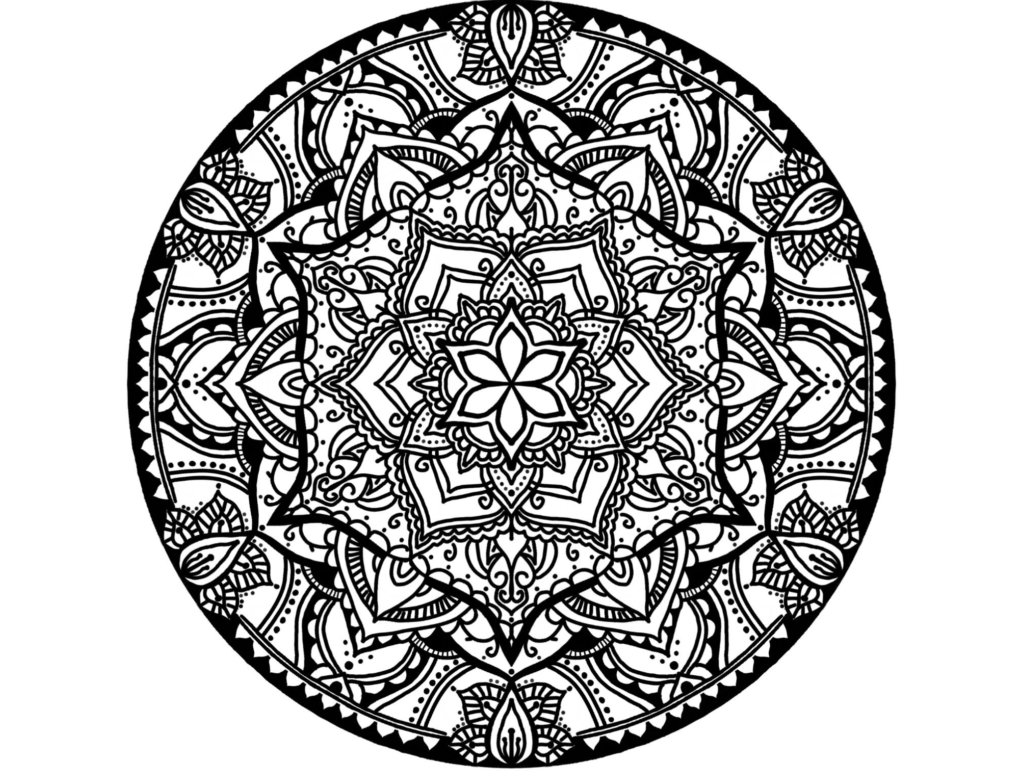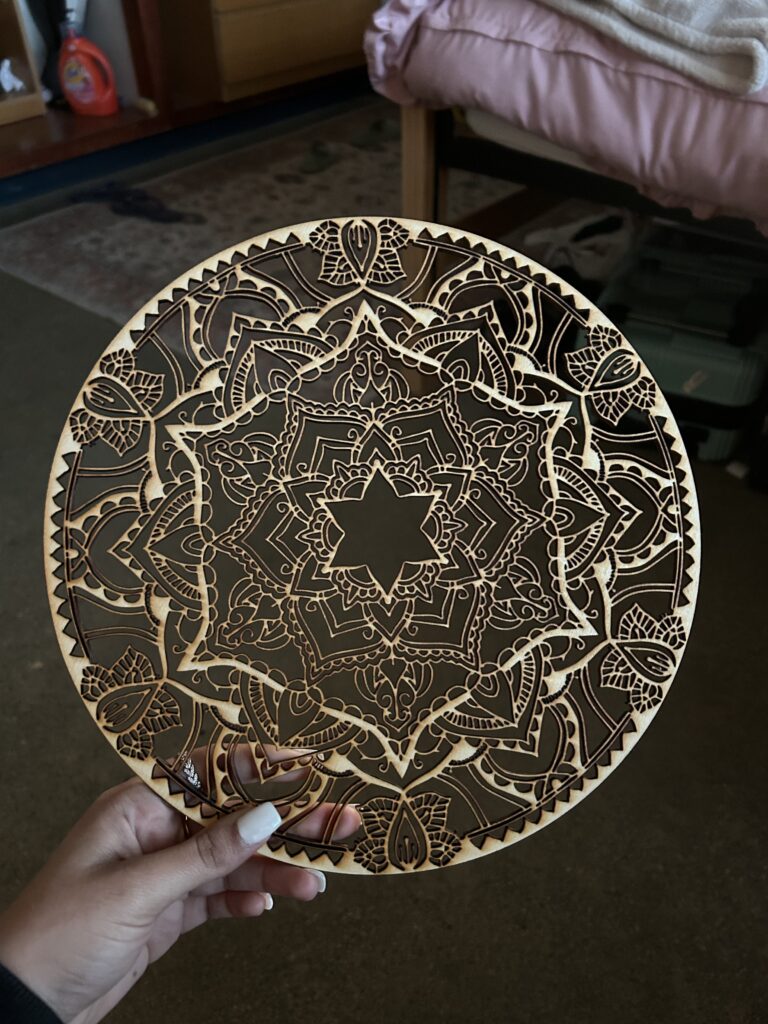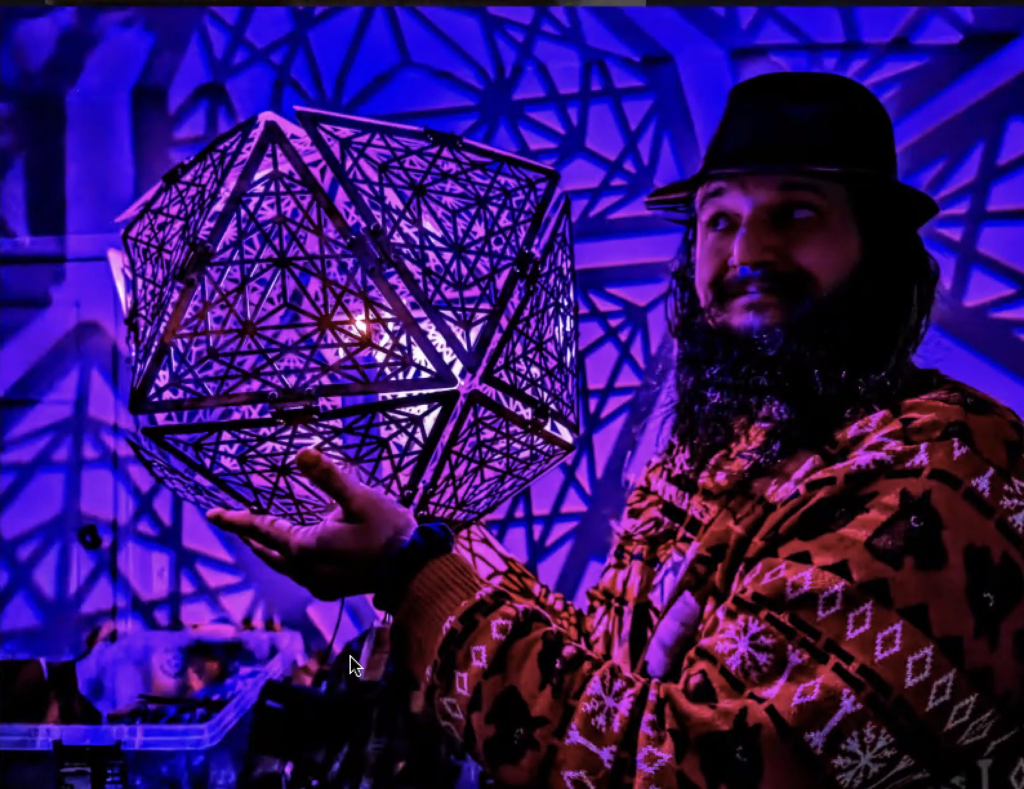I was inspired to study the properties of Mandalas because they are beautiful and intricate designs. Mandalas are artistic representations of the cosmos in both Hinduism and Buddhism. The very word “mandala,” with its roots in the ancient Sanskrit language, translates to “circle,” a shape that universally symbolizes harmony and unity.
Week 1: Planning and learning new technologies
Summary of the week: Decided to use a laser cutter and learned how to use it!
The Journey
I wanted to design my own mandalas and turn the drawings into a wooden sculpture. Initially I was going to program the Makerspace’s shop bot to do the wood cutting for me. However, I found that using a laser cutter was easier for more intricate designs.
Furthermore, I planned on doing multiple mandalas, not realizing how long it would take me to draw a good quality mandala. I ended up focusing on a singular mandala, representing the Dihedral Group of order 12.
Learning to Use the Laser Cutter
I thought a good way to learn how to use the laser cutter was to select a design from online and cut it out. It turned out very beautifully!
Here is a link to the design I used: https://3axis.co/laser-cut-wooden-mandala-partition-decor-svg-file/m1d6ple7/
Week 2: My Own Design
Summary of the week: Created my own Mandala and laser cut it
Understanding the Mathematical Properties:

To understand the mathematic properties, of this mandala, we first have to understand some definitions in group theory.
- Group: Imagine a set of elements that can be combined in pairs through a particular operation to form another element within the same set. This is a group, and it must satisfy four conditions: Closure, Associativity, an Identity Element, and Inverse Elements.
- Dihedral Group: This group embodies the essence of symmetry in an n-sided polygon, encapsulating both rotational and reflective symmetries.
- Order: The term “order” here refers to the number of elements in a group.
This is the Dihedral group of order 12 because there are both rotational and reflective symmetries. Specifically, there are 6 rotational symmetries and 6 reflective symmetries.
Outcome
I ended up laser cutting my project this week as well. The design was so intricate that it took 2 hours to cut!

Reflection
I noticed that some of the details I drew in ended up being cut out. Next time, I should draw the mandala such that all the detail is retained once the black lines are cut out.
Week 3: A new dimension
Summary of the week: Figuring out how to turn my project into a 3D mandala
I was inspired by this reflective lamp and thought this would be an interesting structure to create:

I decided to consider 3D mandalas because the reflective and symmetric properties of them are very interesting to study. I decided to create a triangle mandala that I can use to replicate this Dodecahedron.
I spent the rest of the week creating the design for the Dodecahedron, keeping in mind the mistakes I made the first time around.
Going Forward
I overestimated how long creating the actual lamp would take so in the future, I’d love to cut out this design and assemble the lamp in order to study the group properties of the structure!
Leave a Reply